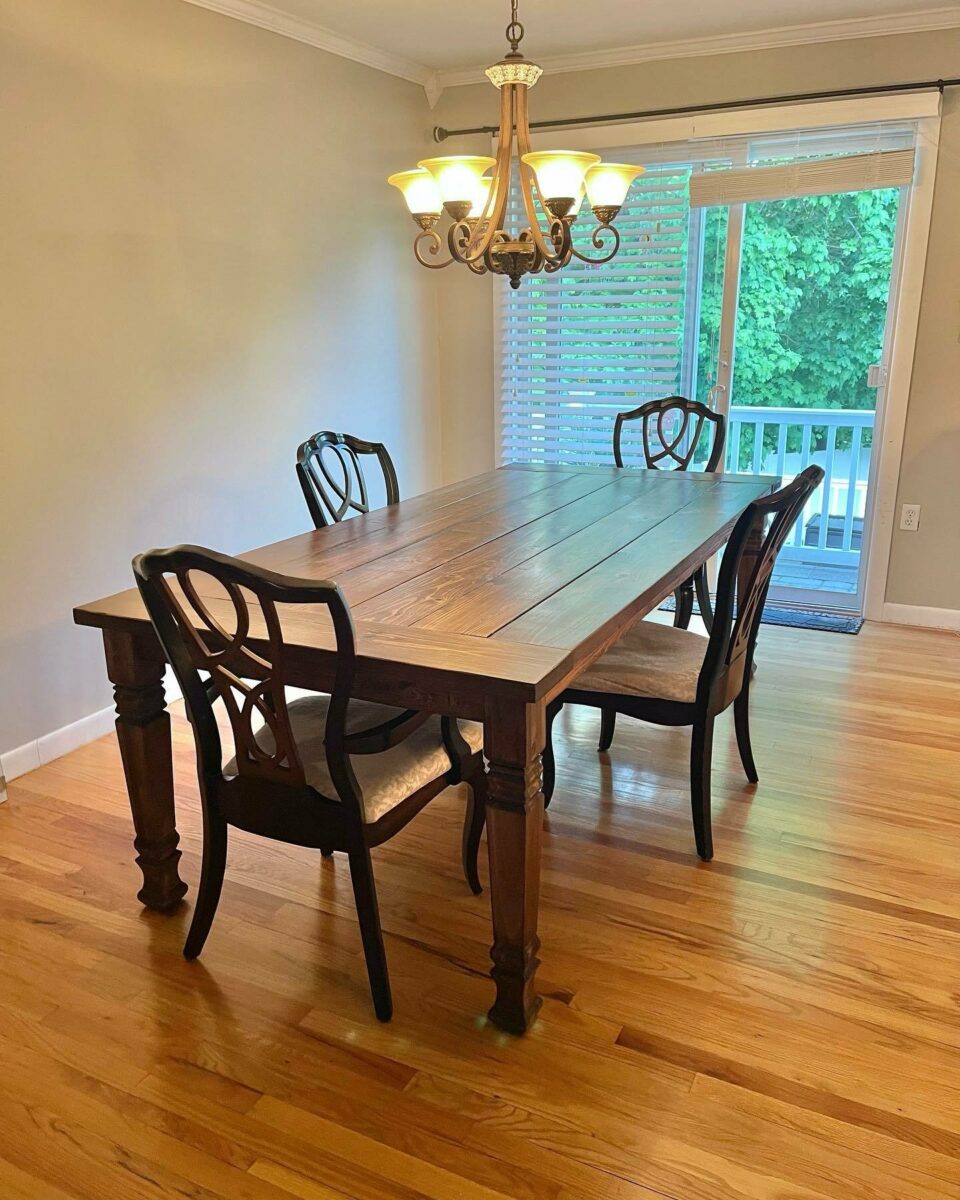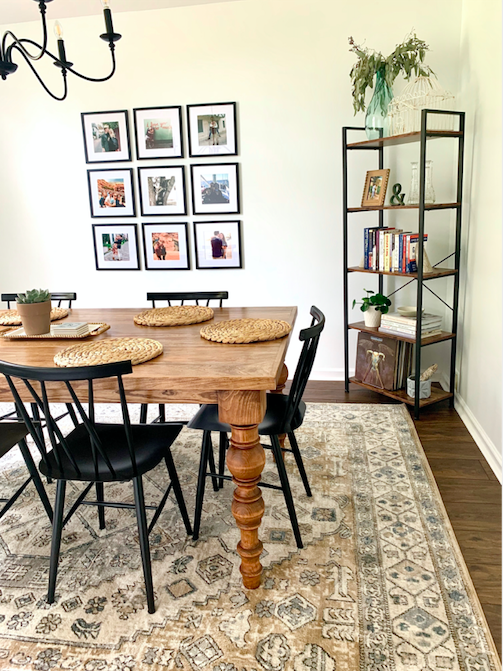Creative Ideas for Replacing or Refurbishing Your Dining Room Table Legs
Creative Ideas for Replacing or Refurbishing Your Dining Room Table Legs
Blog Article
From Standard to Modern: Discover the Perfect Dining-room Table Legs for Your Style
The option of dining room table legs plays an essential role in defining the general character of your room, connecting the void in between traditional craftsmanship and contemporary appearances. While classic designs such as cabriole and transformed legs evoke a feeling of classic elegance, modern designs like barrette and geometric options present a possibility for striking visual interest. Evaluating the right balance in between these styles needs a nuanced understanding of your existing design and personal taste. As you think about these components, the concern stays: exactly how can you seamlessly incorporate these diverse leg styles to create an unified dining experience?
Recognizing Table Leg Styles
The selection of dining area table leg styles can considerably affect both the visual appeals and capability of the area. Each leg design adds unique practical attributes and visual components, accommodating diverse layout preferences and usage requirements. Recognizing these designs is vital for selecting the appropriate table that straightens with your total interior decoration vision.
For circumstances, tapered legs provide a clean, traditional look that can improve an area's sophistication, while stand bases provide security and make best use of legroom, making them ideal for smaller sized areas. Hairpin legs, a characteristic of mid-century modern style, present a commercial panache, permitting an airy, open feel. Similarly, trestle legs evoke rustic appeal, providing robust support and a feeling of timelessness.
In addition, the choice of products plays a considerable role. Wood legs can bring warmth and structure, whereas steel choices frequently share a smooth, modern vibe. Inevitably, understanding table leg designs is necessary for producing a natural dining location that reflects individual style while ensuring functionality and convenience. By attentively thinking about these components, you can enhance both the visual and functional allure of your eating space.
Typical Table Leg Options
When choosing eating room table legs, traditional alternatives commonly personify timeless elegance and workmanship. These designs mirror a rich heritage and a commitment to top quality, making them excellent for those that value traditional looks.
One of the most iconic standard leg designs is the cabriole leg, defined by its stylish rounded shape. This layout often includes attractive carvings and is most generally found in Queen Anne and Chippendale furnishings. Another popular choice is the transformed leg, which flaunts a collection of smooth, rounded shapes that provide a timeless look while keeping security.
Additionally, the straight leg, while simple, provides a durable and unadorned framework that can mix perfectly with a selection of tabletop designs. For those drawn to ornate outlining, claw-and-ball feet legs evoke a feeling of magnificence and can act as a stunning centerpiece in any type of dining space.
Last but not least, pedestal bases, although not strictly legs, provide an alternate typical choice that permits adequate legroom and can be perfectly sculpted. Each of these standard leg designs adds to the total ambiance of a dining-room, weding function with aesthetic allure.

Modern Table Leg Layouts
Modern table leg layouts supply a diverse variety of styles that highlight tidy lines and ingenious materials. These designs typically prioritize capability while functioning as striking focal points within an eating space. Minimalist looks are prevalent, with legs crafted from materials such as metal, glass, and crafted wood, which add to a modern and airy feel.
One popular layout is the barrette leg, defined by its slender, conical structure that supplies security without overwhelming the table top (dining room table legs). This design is commonly located in mid-century contemporary furnishings and can easily enhance different eating table shapes. One more trend is using geometric forms, where legs might handle asymmetrical or angular forms, including aesthetic rate of interest and a touch of artistry

Blending Styles for One-of-a-kind Rooms
Often, house owners look for to create unique dining spaces that reflect their personal design by blending different design elements. This method permits the unification of varied looks, leading to an unified yet distinctive atmosphere. As an example, coupling a rustic wood table with sleek, contemporary steel legs can produce a captivating comparison that elevates the area's total appeal.
Additionally, integrating vintage table legs with contemporary tabletops can stimulate a sense of history while preserving a modern sensibility. Such combinations not only showcase private preference however additionally motivate creative thinking, enabling house owners to curate a space that feels both individual and check it out inviting.
Shade plays a crucial function in this mixing procedure; choosing table legs that match or comparison with the existing color design can improve visual interest. Whitewashed legs can soften the boldness of a dark table surface area, developing a well balanced visual.
Tips for Choosing the Right Legs
Selecting the right table legs is necessary for achieving both functionality and aesthetic charm in your eating area. Begin by considering the general design of your area. Typical settings profit from legs that feature elaborate carvings or turned styles, while modern spaces may require smooth, minimal styles.
Next, evaluate the height and stability useful reference of the legs. dining room table legs. Common eating tables range between 28 to 30 inches in elevation, so make certain the legs complement this measurement for comfort. Additionally, robust materials, such as hardwood or metal, can boost stability and durability
Evaluate the leg shape too-- choices consist of directly, tapered, or stand layouts. Straight legs supply a traditional appearance, while conical legs can add a touch of sophistication. Pedestal bases give ample legroom and are excellent for smaller sized areas.
Final Thought
In summary, picking the suitable eating room table legs needs cautious factor to consider of both contemporary and typical styles. By integrating leg style, elevation, and material with the total décor, a cohesive and welcoming atmosphere can be attained.
The selection of dining room table leg designs can considerably influence both the looks and capability of the area. Inevitably, understanding table leg designs is necessary for producing a cohesive eating area that mirrors individual design while making sure functionality and comfort.One of the most legendary typical leg designs is the cabriole leg, defined by its elegant rounded form. Straight legs offer a classic why not try this out look, while tapered legs can include a touch of sophistication.In summary, selecting the excellent dining space table legs needs careful consideration of both traditional and modern-day styles.
Report this page